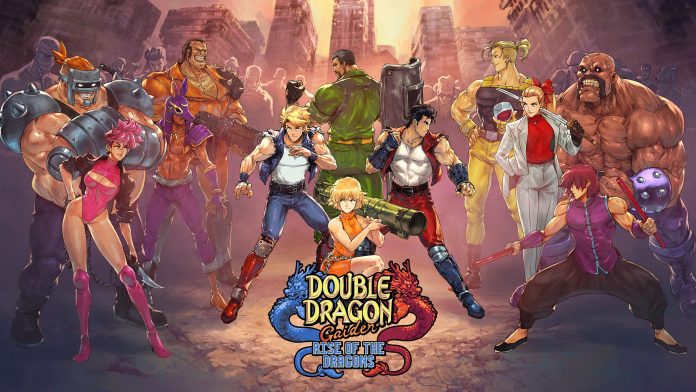Billy and Jimmy Lee are back with Double Dragon Gaiden: Rise of the Dragons, a fun retro-throwback game that gives the franchise better footing to move forward.
Double Dragon, is one of my favorite gaming series, mostly due to the fact Double Dragon II was one of the handful of NES games I had when a family member passed it down to us. As only one of five total games I had…it got a whole bunch of play time. It didn’t hurt that it was a legitimately great game either.
Double Dragon Gaiden: Rise of the Dragons
Developed By: Secret Base, Modus Games
Platforms: PlayStation 4|5, Xbox Consoles, Nintendo Switch, PC
Release Date: July 27, 2023
The Double Dragon games ushered in the “golden age” of the beat ’em up genre and served as the pinnacle for a bit…and yet, it’s largely been left in the past. Since the SNES days, the franchise has struggled to achieve a semblance of its former glory, with a handful of sporadic (and poorly received) follow-ups/revivals/sequels.
As a fan, it’s been a bit rough. There’s hope, however, with the release of Double Dragon Gaiden! The game manages to bring some new—modern—mechanics to the series, while balancing the elements that made it great. It’s not perfect, but definitely gives the franchise a better starting point than it’s seen in a while.
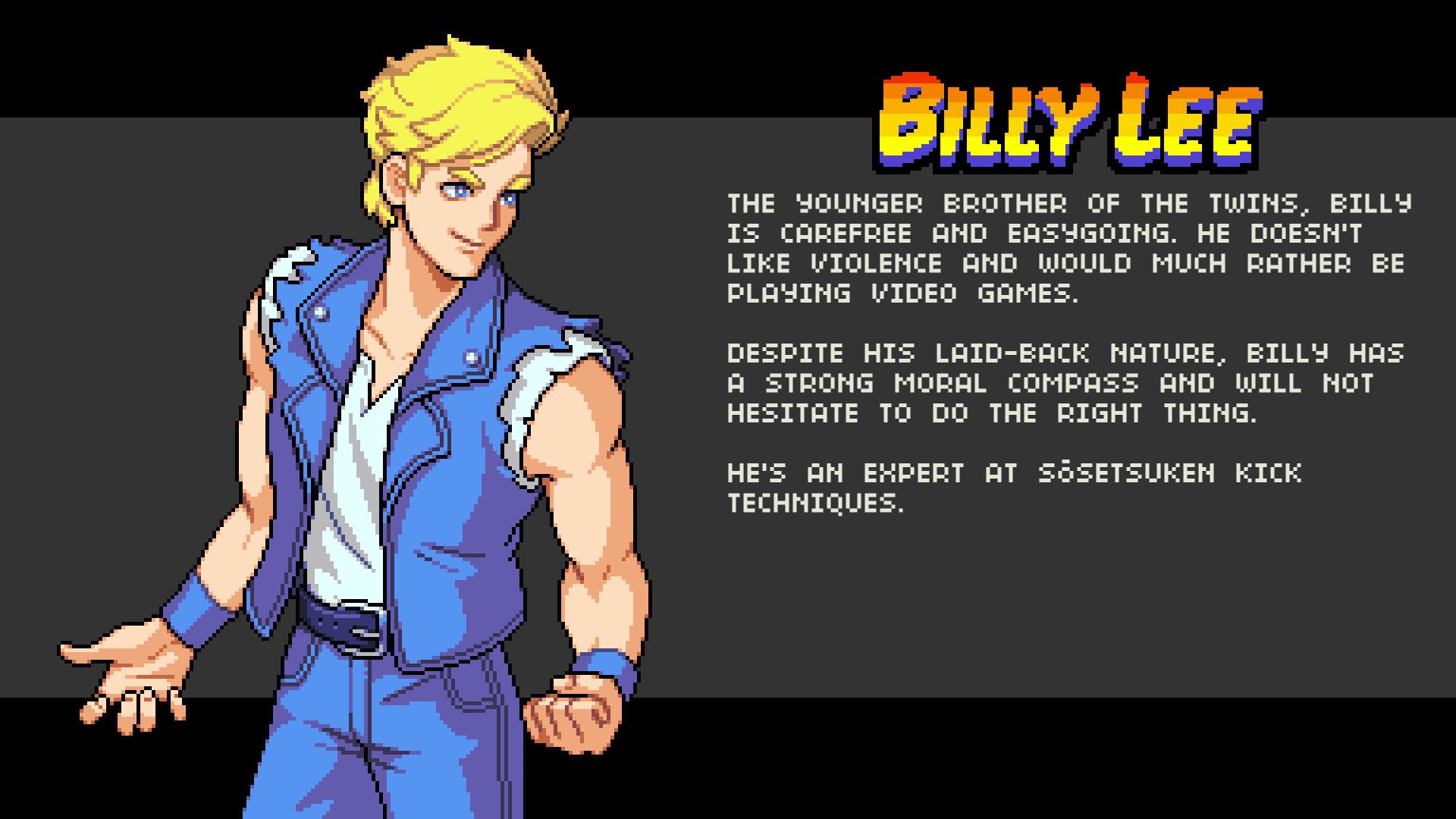
The Basics
Double Dragon Gaiden serves as the next mainline entry in the franchise and brings back the retro pixel style (much like the recent TMNT: Shredder’s Revenge). It’s not necessarily a reboot, and hits on some familiar characters/stuff from previous games, but it’s not exactly breaking a bunch of new ground (story-wise) either. So if you haven’t played anything else in the franchise before, you’ll be just fine. For fans, however, there are some fun things to discover.
The story picks up on a familiar beat from the series, being set in a post-nuclear war New York City that is being overrun by various street gangs. Martial Artists Billy and Jimmy Lee embark on a journey to clean up the streets. This time around, however, they’re joined by a pair of allies: series mainstay, Marion and total newcomer, Uncle Matin.
These four main characters can be swapped around between levels, as they battle together using a fun tag-team mechanic (more on that in a sec). Throughout the game, you’ll be able to unlock other playable fighters including the major bosses and sub-bosses. So yes, if you’ve ever dreamed of battling through the Double Dragon world as the iconic villain, Abobo, you’re in luck.
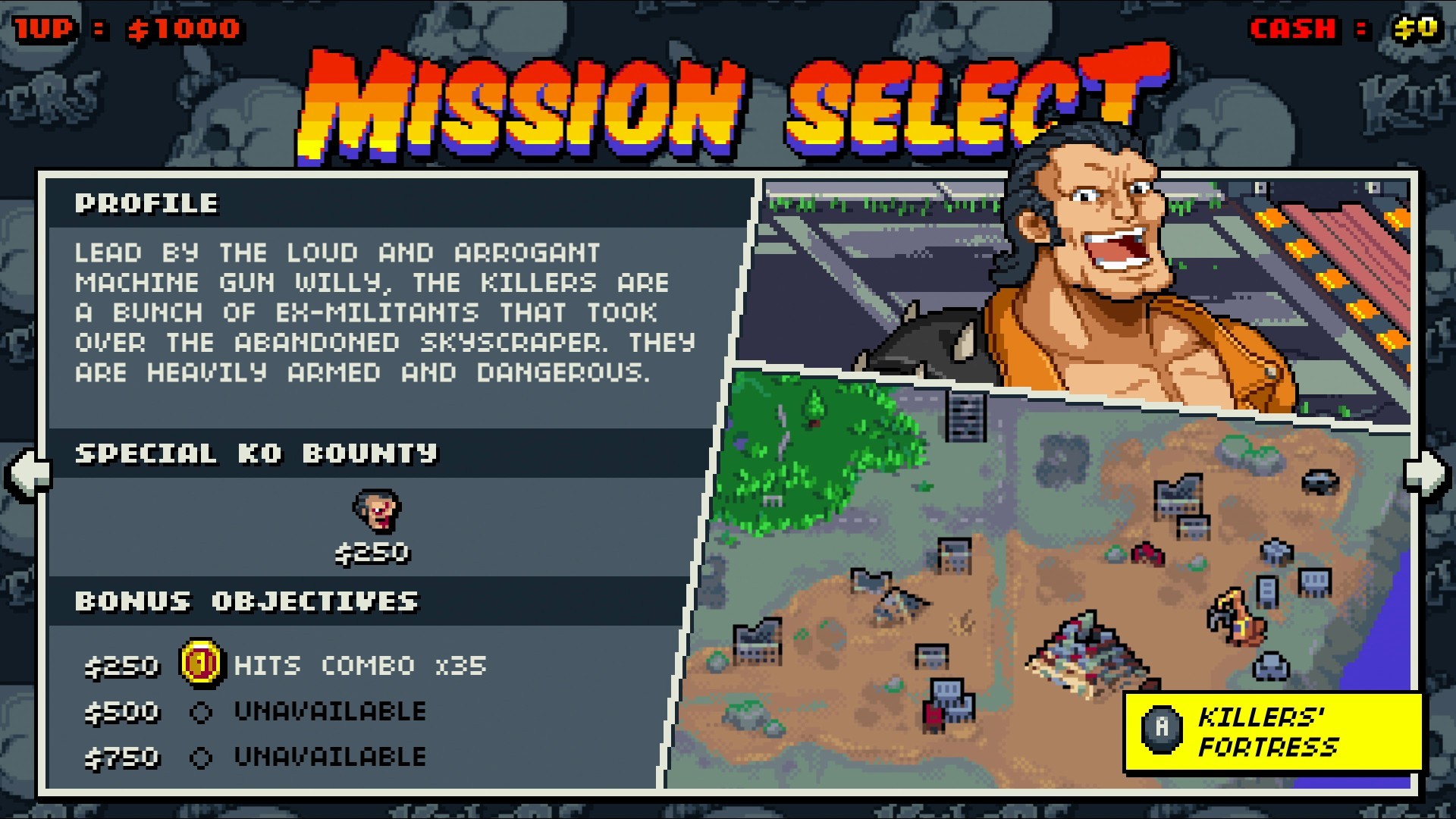
Player’s Choice
In total, there are 13 playable characters you can unlock in Double Dragon Gaiden, all of whom bring their own unique fighting/play style to the table. As you’ll enter each level with your choice of two fighters, it’s easy enough to develop your own unique strategy and style to tackling missions (and can change things up when needed to approach different challenges).
That’s because the game utilizes a tag-team battle system. Yes, you can play with a friend (local co-op only at the moment), but everyone gets two fighters to take into battle. At nearly any given time (there’s a bit of a cool down process involved), you’re able to hit a button and tag in the other combatant to take you place.
It’s pretty much seamless, which is helpful for if you’re current character is caught up in an ass-whipping, you can swap them out to give them a bit of breathing room. Balancing these two characters is a big part of the strategy involved, as each area is filled with different challenges/sections that might require a different fighting style.
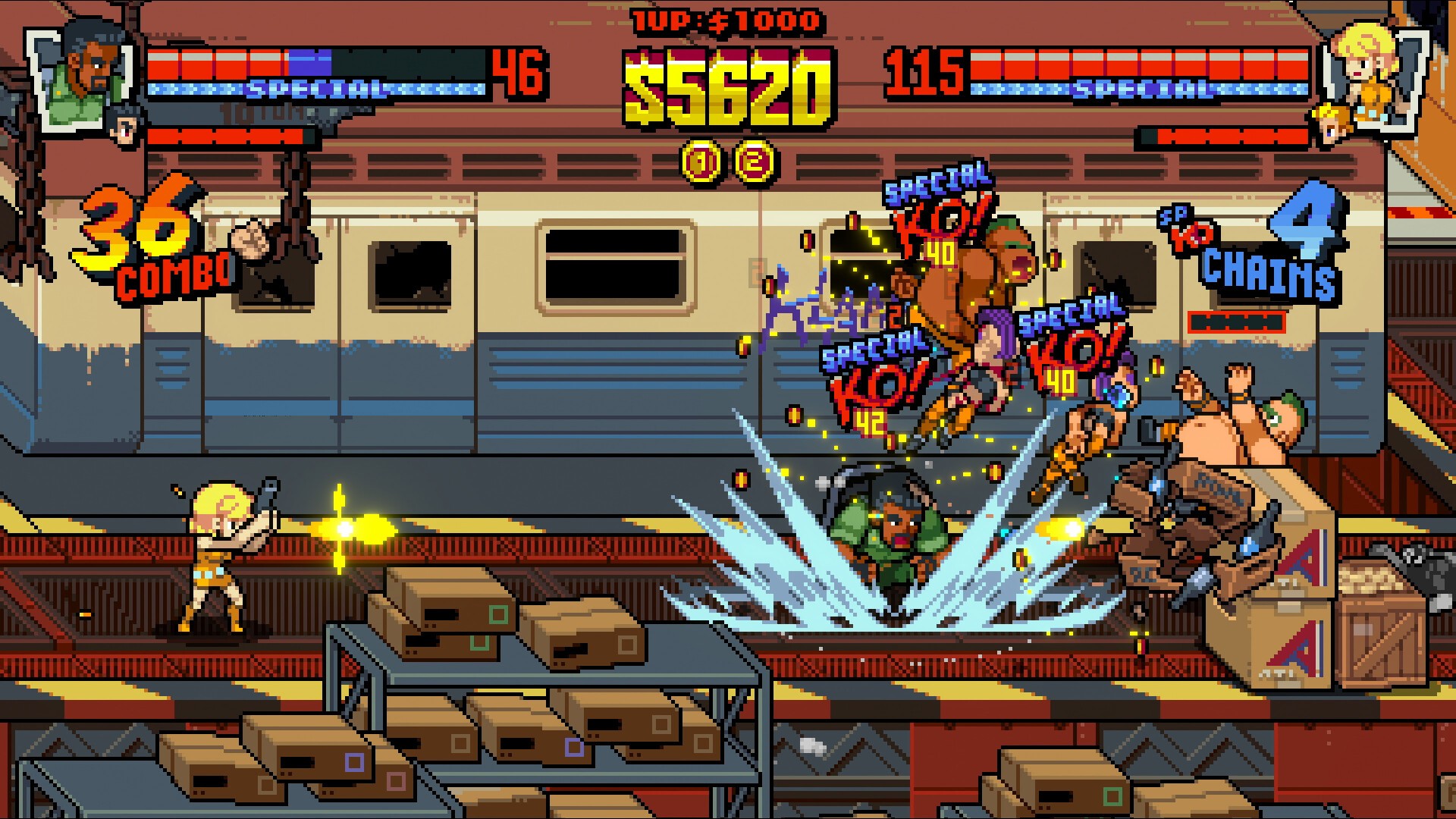
Billy is a bit more agile and uses faster kicks, while Jimmy is a bit slower but more powerful. Together, they work well as you can swap them out when it’s time for heavier attacks as opposed to clearing out a crowd of enemies while avoiding damage. Marion is a pretty drastic departure as she’s more about long-range attacks, which can certainly help pick off opponents from a distance, before swapping to a hands-on fighter when the crowds close in. Finding your own play style is a large part of the fun. With so many character combinations to go with, no playthrough feels the same.
Another thing that significantly helps with the replay value, is how the world is setup. From the outset, you can choose to begin at any of four stages (one for each gang) and begin cleaning up the city from there. Here’s the kicker…every time you take down one of the crime bosses, the other gangs beef up their defenses/bases.
So the second level you tackle (again, your choice) will have a secondary stage filled with even more enemies along with a mid-boss to take down. This continues to stack, until you get to the “final” gang and have to work your way through four different stages and bosses before reaching the end point.
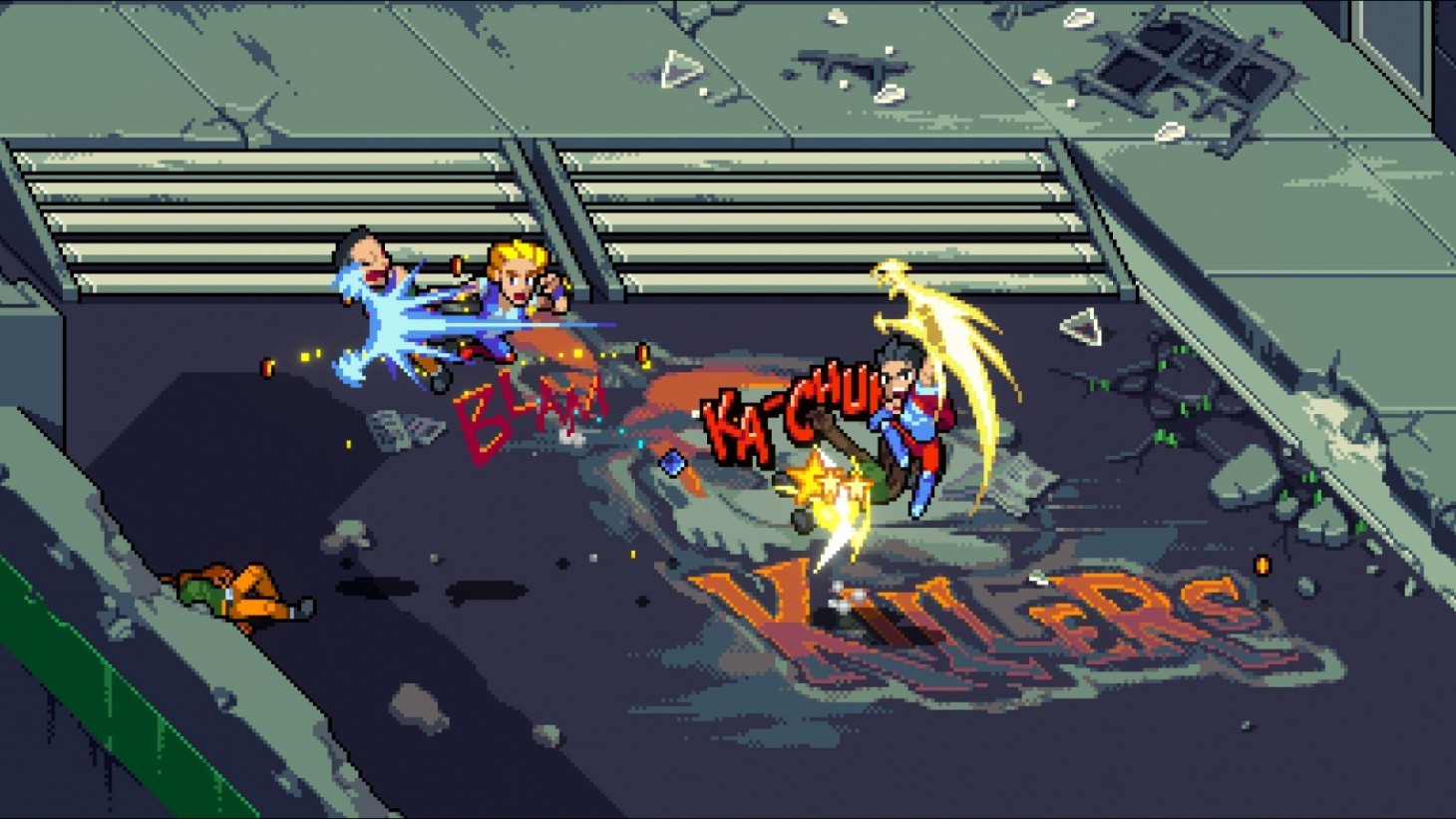
This roguelike quality ensures that no matter which path(s) you choose, the game gets progressively more difficult. Even better, it offers more incentive to replay the game, as I found myself curious to see what the additional stages on earlier levels looked like.
One of the biggest things the beat ’em up genre has to contend with is getting repetitive as the game goes on. By structuring the story/gameplay in this manner, Double Dragon Gaiden finds a fun way to workaround this issue. It’s a neat approach and one that largely works as intended. It also doesn’t hurt that the levels themselves offer some minor exploration to find money and secrets (which give you more money).
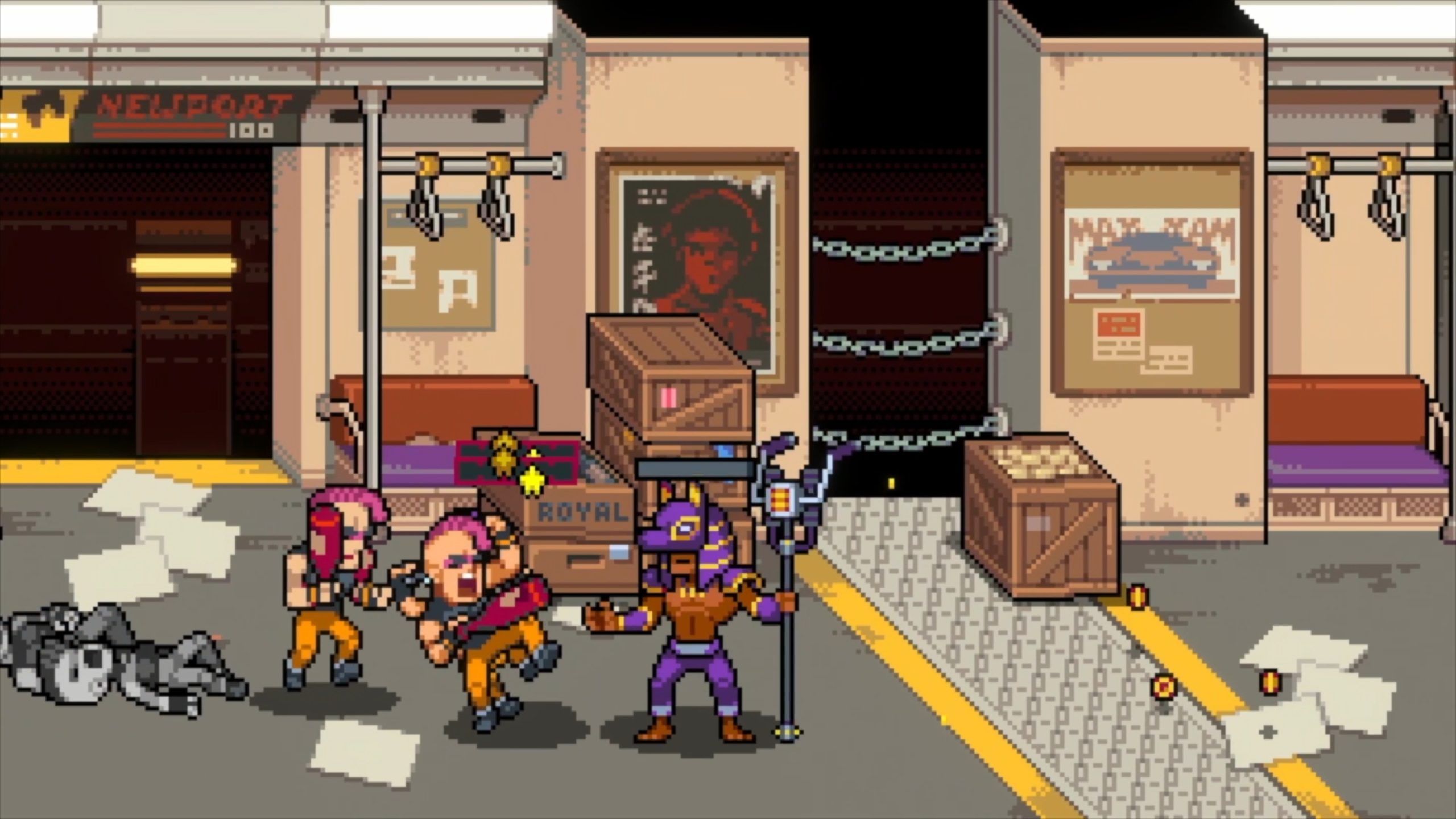
Fists of Fury
Combat itself is relatively straightforward/simple, though it feels impactful and looks gorgeously animated. You have a basic attack, a grab, a jump/double jump, and a few different “special” attacks assigned to different buttons. Clearing out enemies will fill up your special meter, allowing you to unleash those specials, but figuring out the best time to use them is another factor involved in combat.
Enemies can swarm you and it’s not hard to find yourself in the middle of a large group as they take turns pounding the snot out of you. Saving your specials means you have a chance to take out a whole bunch at once. More than giving you room to breath, these “Crowd Control” combos have other benefits including health perks. As such, there’s a risk/reward aspect to keep in mind while going through each level.
As always, your characters are able to pick up weapons dropped by enemies. Each one manages to have a different feel to them; especially as you reach latter stages. The simple knife and bottle hit fast, while led pipes, bats, and sledgehammers deal massive damage at the cost of being ridiculously slow. Bo staffs and spears offer unique combos and bombs…well, they blow shit up.
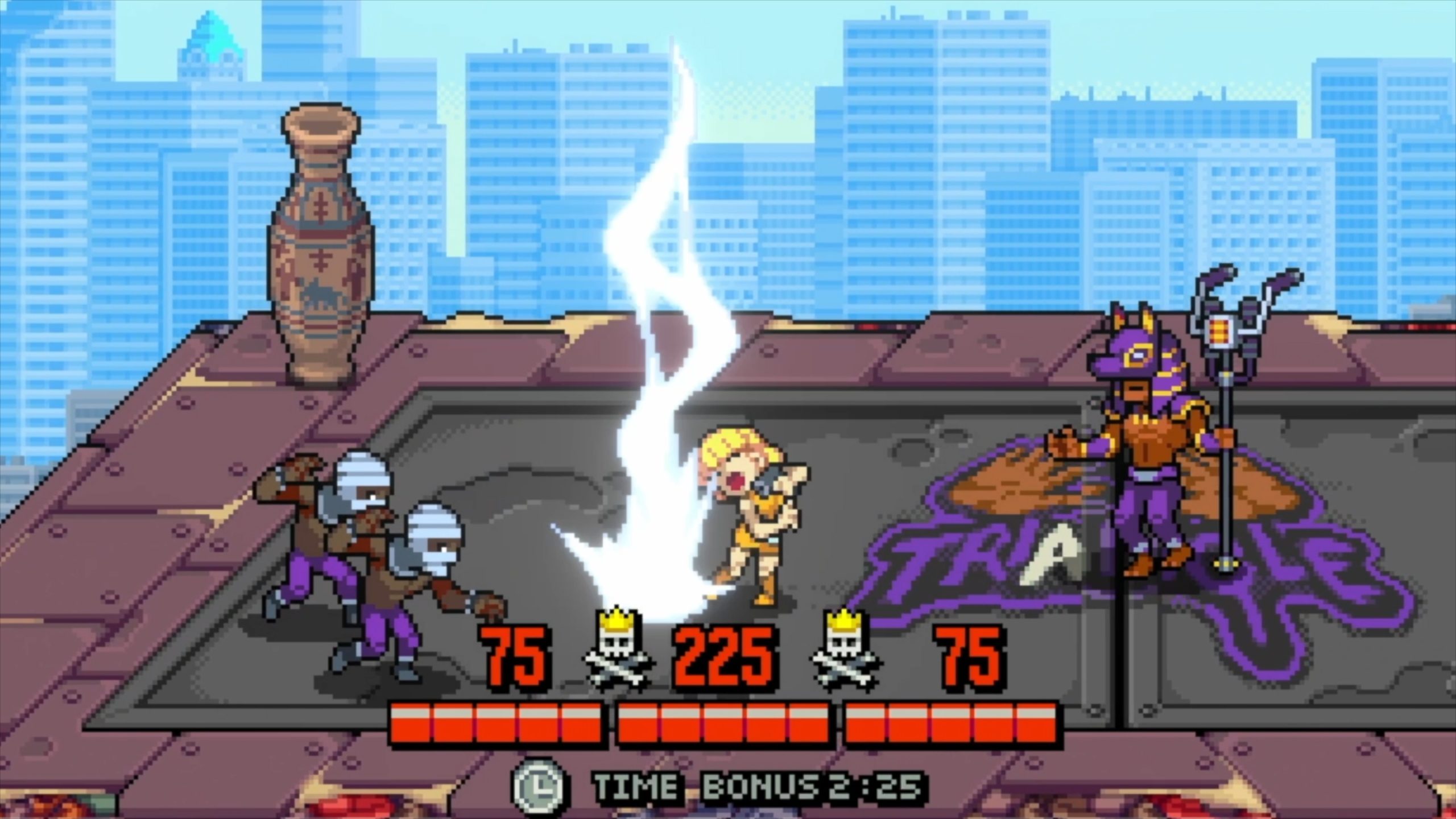
In some ways, finding which weapon works best for your personal play style is another strategy element to consider. Personally, I valued speed and the ability to get in an out of close combat quickly. As such, the slower weapons (despite their increased power) actually worked against me; costing me more life than I would normally take.
One of the biggest problem I had when it comes to combat, is too many things share the same button inputs. On the minor side of things; executing the special attacks you want can be a smidge frustrating. Mostly because using of the three special attacks you have are dependent on direction and what your character is doing at the time you initiate.
The problem here, is that in the middle of battle, as dozens of enemies swarm you, it’s insanely difficult to keep track of that type of thing. As such, hitting the specific super attack I wanted in a given situation was more about luck than actual skill on my part. Don’t get me wrong, a super attack is still a super attack and helps, but some are geared towards being swarmed, while others work better at a distance.
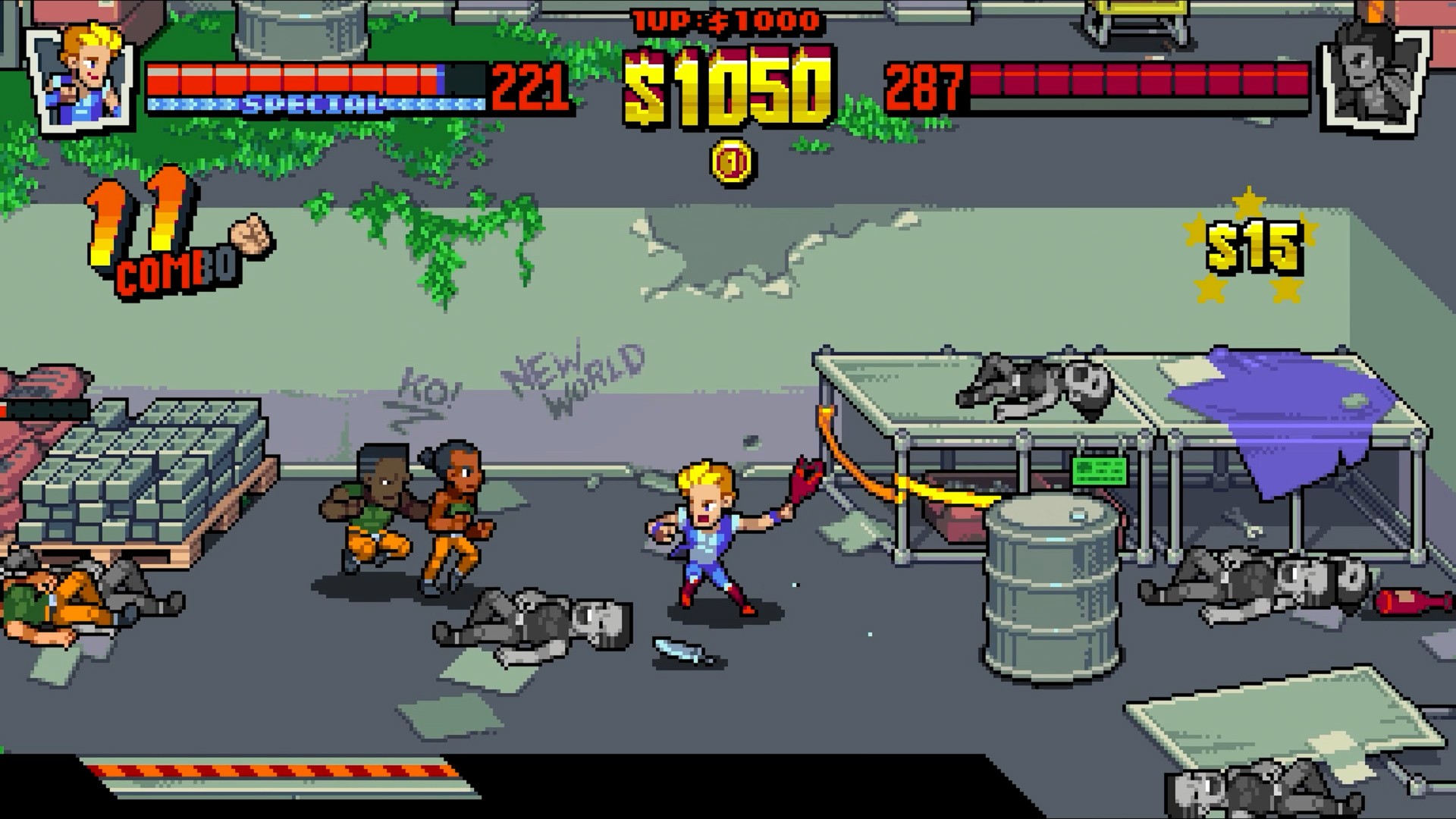
A bigger issue, however, is how both the grab and pick-up item action are mapped to the same button. If you a initiate a grab on an enemy, your character flings forward and wraps their arms around an enemy. If you miss, you waste precious pixels/seconds watching an animation of the character grabbing at nothing. There were plenty of times I found myself in the midst of an ass-whooping solely because I whiffed a grab and started getting combo’d by the enemy.
I can’t tell you how many times I went to pick up an item (health, cash, or a weapon) only to accidentally trigger the grab animation instead. Then I’d have to wait for that to end and try again, or fight back enemies who managed to get closer while it was happening. It’s almost too easy to do, and if you’re off the mark by a few pixels…welp!
Generally speaking, the combat in Double Dragon Gaiden is fun. The relatively simple approach to it (almost being a one-button masher) along with it’s presentation, makes it easy to get into and feel like a badass. Plus, tagging out and special attacks add some depth as you move along. It just doesn’t feel deep enough.
Rather than adding depth, the way specials and grabs are handled feel more like attempts at covering the shallowness of the overall gameplay. It’s still plenty of fun, but lacks a certain oomph that other modern beat ’em ups (especially Shredder’s Revenge, which it’s clearly trying to emulate) possess.
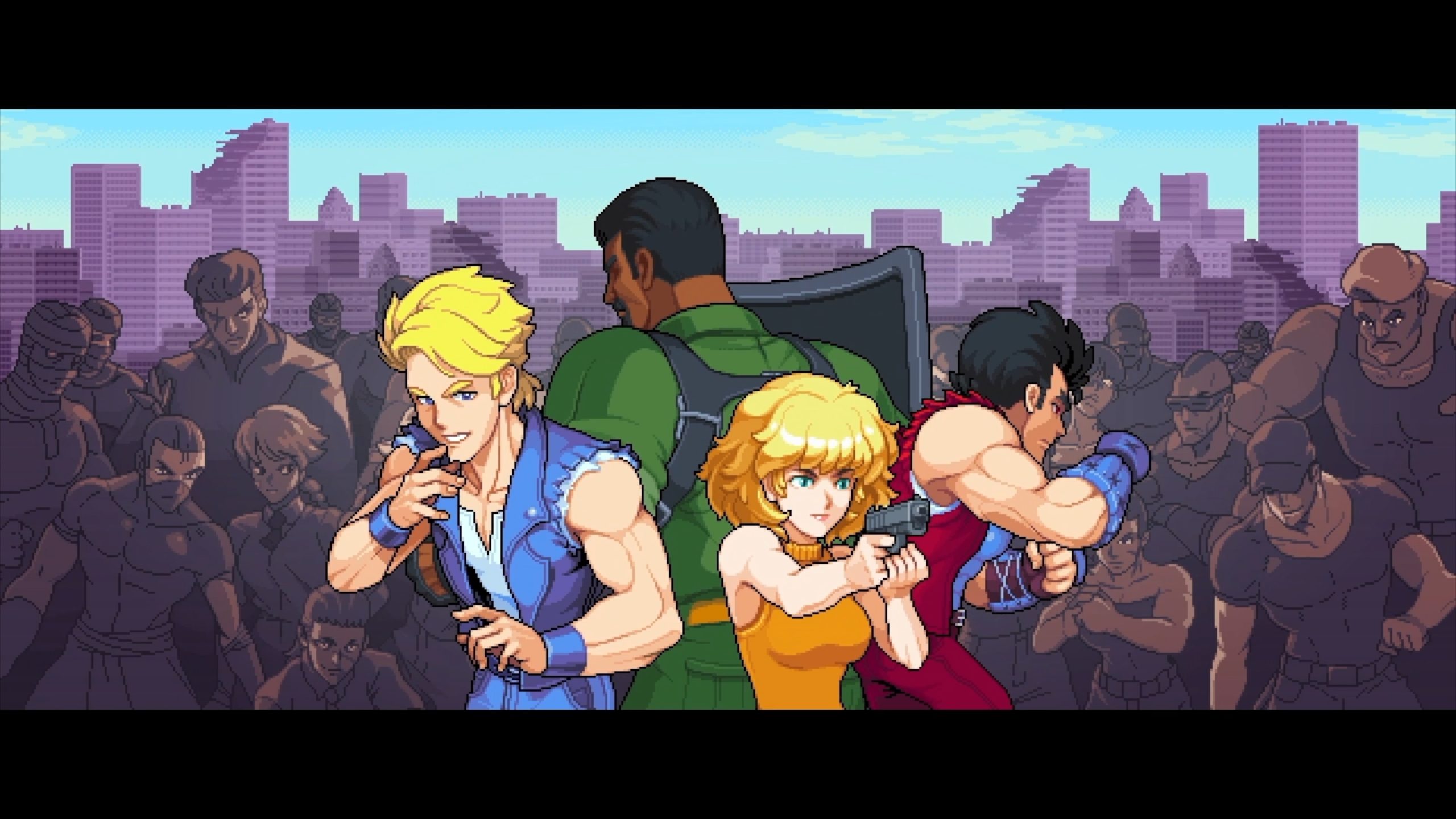
More Money, More Problems
Acquiring money (from beating enemies, finding it lying around after destroying parts of the environment) is a surprisingly important aspect of the game. Pretty much everything you do is geared towards getting more money, which you’ll then spend on everything from damage boosts to continues when a character is knocked out (which gets more expensive each time).
Between levels and checkpoints, you’ll have the chance to spend the cash on a variety of perks. Here’s the thing, though, you can only buy one upgrade per character and the items are randomized each time. Ostensibly, this adds another layer of strategy as you’ll have to carefully choose bonuses to complement your characters and play styles. Frankly, it just comes across as an annoyance.
Mostly because some—seemingly basic—perks are locked behind this system. These characters can move SLOW at times (even with a run button), and one of the upgrades you can buy is a speed boost…for walking. I shouldn’t have to wait/hope for a walking speed boost to potentially drop AND have to sacrifice a whole purchase to get it.
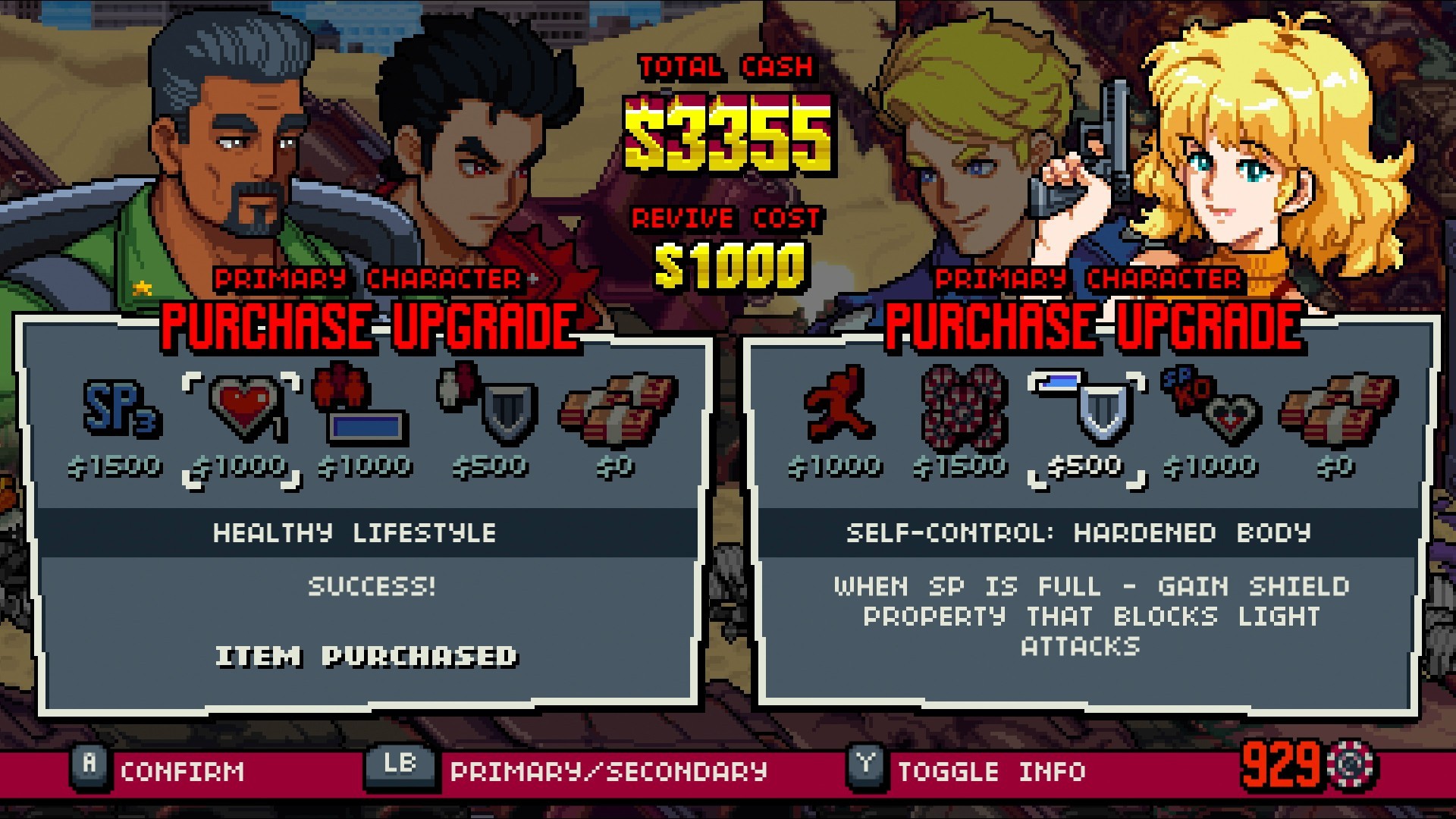
Same goes for perks that allow you to stun or hit enemies when tagging out characters. If you don’t have this, you literally just swap out characters, which means you sometimes tag into an ass-whipping. I get having to pick and choose actual upgrades dealing with health boosts, shields, special attacks, and power, but basic mechanics? No, that’s just a bummer.
Beyond that, you can also buy tokens, which you can use for continues once you hit the big “game over” screen. Or you can use them at the “Token Shop” from the main screen where you can exchange them for four different things: characters, hints, art, and music.
I don’t care much for buying music tracks in the game (though there are some retro bangers), and the hints are borderline insulting. By and large, any hints you buy are things you’ve likely been able to figure out just by playing the game for a little bit. Yes, I was able to figure out taking down big groups of enemies at once would give me health items without buying the hint.

Pretty much just go for the bonus characters. They add some fun to the gameplay and change up enough of a mission to make it worth playing again. Everything else feels like an attempt to expand the game into something more than it is.
Generally speaking, this is Double Dragon Gaiden‘s biggest problem. While it’s certainly fun and enjoyable, you can absolutely tell when it’s trying to be a bigger game than it can be. The run time is relatively short, prioritizing replay value by changing up levels/characters, and any attempts to expand beyond that feel a tad cheap.
The result is it having the reverse affect that it wants. Rather than covering the game’s inherent problems, it shines a light on them. It’s easier to see how it lacks the oomph for what it’s trying to do/be.

